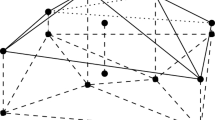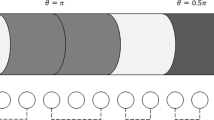Abstract
Interactive compression refers to the problem of compressing data while sending only the part requested by the user. In this context, the challenge is to perform the extraction in the compressed domain directly. Theoretical results exist, but they assume that the true distribution is known. In practical scenarios instead, the distribution must be estimated. In this paper, we first formulate the model selection problem for interactive compression and show that it requires to estimate the excess rate incurred by mismatched decoding. Then, we propose a new expression to evaluate the excess rate of mismatched decoding in a practical case of interest: when the decoder is the belief propagation algorithm. We also propose a novel experimental setup to validate this closed-form formula. We show a good match for practical interactive compression schemes based on fixed-length Low-Density Parity-Check (LDPC) codes. This new formula is of great importance to perform model and rate selection.






Similar content being viewed by others
References
Roumy A., Maugey T. (2015) Universal lossless coding with random user access: the cost of interactivity. In: 2015 IEEE International Conference on Image Processing (ICIP), pp 1870–1874
Dupraz E., Roumy A., Maugey T., Kieffer M. (2019) Rate-storage regions for extractable source coding with side information. Physical Communication 37:100845
Mahmoudian Bidgoli N., Maugey T., Roumy A. (2019) Compression de contenus 360 et transmission adaptée á la navigation de l’utilisateur. In: Actes de la 27éme édition du colloque Gretsi
Maugey T., Roumy A., Dupraz E., Kieffer M. (2020) Incremental coding for extractable compression in the context of massive random access. IEEE Transactions on Signal and Information Processing over Networks 6:251–260
Draper S.C., Martinian E. (2007) Compound conditional source coding, slepian-wolf list decoding, and applications to media coding. In: 2007 IEEE International Symposium on Information Theory, pp 1511–1515
Chen J., He D., Jagmohan A. (2009) On the duality between Slepian–Wolf coding and channel coding under mismatched decoding. IEEE Trans Inf Theory 55(9):4006–4018
Merhav N., Kaplan G., Lapidoth A., Shamai Shitz S. (1994) On information rates for mismatched decoders. IEEE Trans Inf Theory 40(6):1953–1967
Ganti A., Lapidoth A., Telatar I.E. (2000) Mismatched decoding revisited: general alphabets, channels with memory, and the wide-band limit. IEEE Trans Inf Theory 46(7):2315–2328
Scarlett J., Martinez A., i. Fabregas A.G. (2014) Mismatched decoding: error exponents, second-order rates and saddlepoint approximations. IEEE Trans Inf Theory 60(5):2647–2666
Mahmoudian Bidgoli N., Maugey T., Roumy A., Nasiri F., Payan F. (2019) A geometry-aware compression of 3d mesh texture with random access. In: 2019 Picture Coding Symposium (PCS), pp 1–5
Han T.S., Kobayashi K. (2002) Mathematics of information and coding. Translations of mathematical monographs, Providence, R.I. : American Mathematical Society, 203
Csiszar I., Shields P.C. (2004) Information theory and statistics: a tutorial. Foundations and Trends in Communications and Information Theory 1(4):417–528. Publisher: Now Publishers, Inc.
Rissanen J. (1978) Modeling by shortest data description. Automatica 14(5):465–471
Gruenwald P.D. (2007) The minimum description length principle. MIT Press
Dupraz E., Maugey T., Roumy A., Kieffer M. (August 2017) Transmission and storage rates for sequential massive random access. arXiv:1612.07163 [cs, math]
Cover T.M., Thomas J.A. (2006) Elements of information theory (wiley series in telecommunications and signal processing). Wiley-Interscience, USA
Bidgoli N.M., Maugey T., Roumy A. (2017) Correlation model selection for interactive video communication. In: 2017 IEEE International Conference on Image Processing (ICIP), pp 2184–2188
Sae-Young Chung, Forney G.D., Richardson T.J., Urbanke R. (2001) On the design of low-density parity-check codes within 0.0045 db of the shannon limit. IEEE Commun Lett 5(2):58–60
Roumy A., Guemghar S., Caire G., Verdu S. (2004) Design methods for irregular repeat-accumulate codes. IEEE Trans Inf Theory 50(8):1711–1727
Richardson T.J., Shokrollahi M.A., Urbanke R.L. (2001) Design of capacity-approaching irregular low-density parity-check codes. IEEE Trans Inf Theory 47(2):619–637
Wyner A. (1974) Recent results in the shannon theory. IEEE Trans Inf Theory 20(1):2–10
Chen J., He D., Yang E. (2007) On the codebook-level duality between slepian-wolf coding and channel coding. In: 2007 Information Theory and Applications Workshop, pp 84–93
Wang L., Kim Y. (2015) Linear code duality between channel coding and slepian-wolf coding. In: 2015 53rd Annual Allerton Conference on Communication, Control, and Computing (Allerton), pp 147–152
Liveris A.D., Zixiang Xiong, Georghiades C.N. (2002) Compression of binary sources with side information at the decoder using ldpc codes. IEEE Commun Lett 6(10):440–442
Westerlaken R.P., Borchert S., Gunnewiek R.K., Lagendijk R.L. (2007) Analyzing symbol and bit plane-based ldpc in distributed video coding. In: 2007 IEEE International Conference on Image Processing, 2, pp II–17–II–20
Gallager R. (1962) Low-density parity-check codes. IRE Transactions on Information Theory 8 (1):21–28
Richardson T.J., Urbanke R.L. (2008) Modern coding theory, Cambridge Univ Press
ten Brink S. (2001) Convergence behavior of iteratively decoded parallel concatenated codes. IEEE Trans Commun 49(10):1727–1737
Ryan W., Lin S. (2009) Channel codes: classical and modern, Cambridge University Press
Land I., Huber J. (2006nov) Information combining. Found. Trends Commun. Inf. Theory 3 (3):227–330
Ashikhmin A., Kramer G., ten Brink S. (2004) Extrinsic information transfer functions: model and erasure channel properties. IEEE Trans Inf Theory 50(11):2657–2673
ten Brink S., Kramer G., Ashikhmin A. (2004) Design of low-density parity-check codes for modulation and detection. IEEE Trans Commun 52(4):670–678
Sun Z., Tian C., Chen J., Wong K.M. (2010) Ldpc code design for asynchronous slepian-wolf coding. IEEE Trans Commun 58(2):511–520
Funding
This work was partially supported by the Cominlabs excellence laboratory with funding from the French National Research Agency (ANR-10-LABX-07-01) and by the Brittany Region (Grant No. ARED 9582 InterCOR).
Author information
Authors and Affiliations
Corresponding author
Additional information
Publisher’s note
Springer Nature remains neutral with regard to jurisdictional claims in published maps and institutional affiliations.
Rights and permissions
About this article
Cite this article
Bidgoli, N.M., Maugey, T. & Roumy, A. Excess rate for model selection in interactive compression using belief propagation decoding. Ann. Telecommun. 75, 623–633 (2020). https://doi.org/10.1007/s12243-020-00805-z
Received:
Accepted:
Published:
Issue Date:
DOI: https://doi.org/10.1007/s12243-020-00805-z




